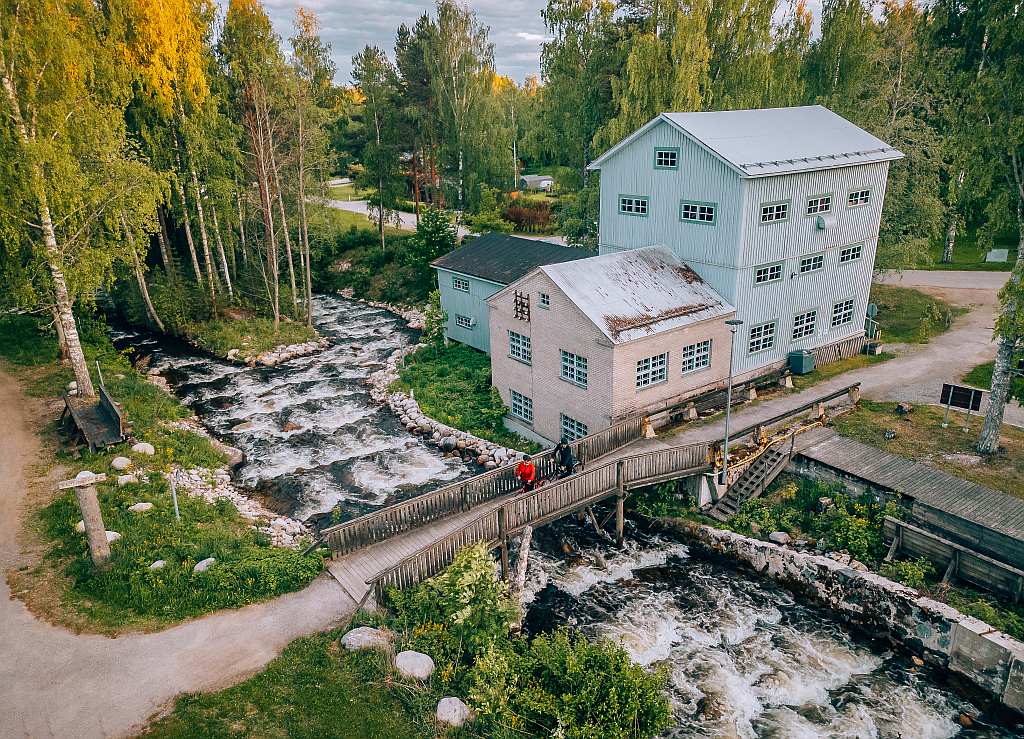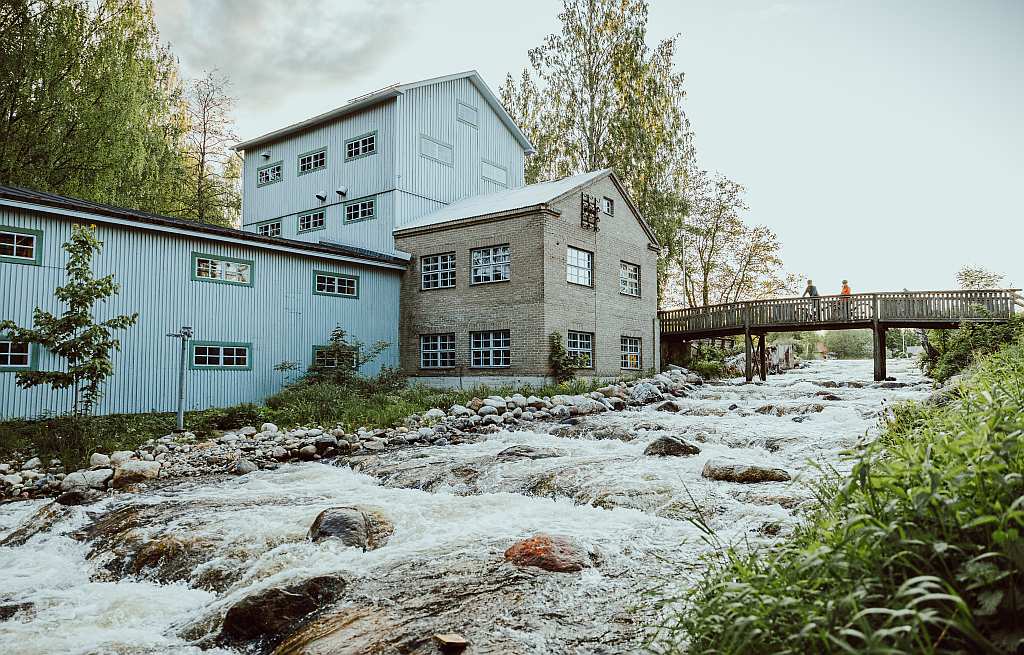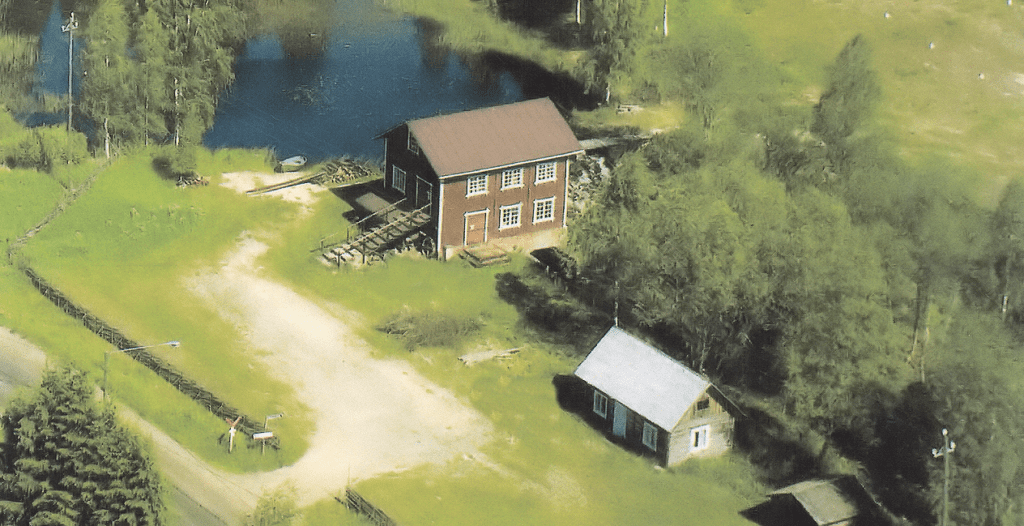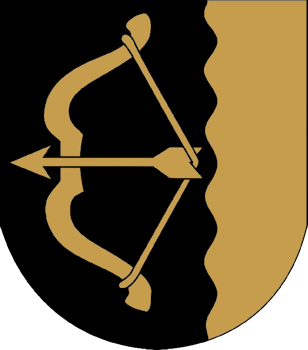Mills of Savonranta
In Savonranta, in the early 19th century, grain was ground with handstones. The work was hard and time-consuming. The milling was mainly done by women. The spread of mills freed women from this heavy work.

Vuokala mill
Mills of Savonranta
In the 1860s, there were two mills in Savonranta: the Vuokala mill and the Säimene mill. Both mills were powered by water. Savonranta had very poor transport connections. Roads could take decades to build; for example, the road between Kerimäki and Savonranta took 17 years to build. Poor access meant that the number of mills grew rapidly. In the best times, Savonranta had fourteen tax-paying mills and a domestic one.
The tax-paying mills were known as customs mills. Anyone could bring their grain to be ground there. A proportion of the grain to be milled was charged as a milling fee. The mills paid a tax to the Crown on their operations.
The Vuokala mill
The first Vuokala mill was established as early as the 1860s. It was owned by the Kansanen family, who had been active in Savonranta for decades. When Pekka Kansanen bought Vuokala sawmill in 1894, the deal included Monninsaari Manor and Vuokala Mill. The mill was converted into a steam mill in 1898.
The Vuokala mill was used to grind grain imported from Russia.
The mill was a commercial operation. The flour was sold to various parts of Savo as an addition to the local market. In the first decade of the 20th century, an electric power station was set up at the mill. The charcoal-burning plant supplied the houses in Vuokala.
In 1941, a wheat milling section was added to the Vuokala mill.

Vuokala mill
The wheat grain travelled along the mill’s elevator pipes for four kilometres before it was made into wheat flour. In the high season, four millers worked day and night to grind some 20.000 kilos of rye and wheat a week, transported by the Vuokala milling and electricity plant’s own vehicles. Cereals brought in by the customers themselves were also milled. Customers brought grain from as far away as Liper and Räükkylä.
The present mill and power station was built in 1937. The Vuokala Mill and Electricity U.P. Kansanen, registered by Ukko-Pekka Kansanen, ceased operations in 1995. In 2001, the mill was transferred to the municipality and the renovation of both the mill and the power plant began. The power plant technology was renewed and automation was brought to and to this day Savonranta is still powered by electricity from its own power plant. Today, the mill is an interesting historical site in the village, on the waterfront, and grain milling is still possible.
The mill now hosts many activities: an exhibition on milling and electricity production, a basic exhibition on the history of Savonranta, art exhibitions by amateur artists, craft exhibitions by Savonranta craftsmen and a craft shop, and a guide point for the Kolovesi National Park.
The Säimene mill
The Säimenen mill was built on the banks of the Säimenen river in the village of Lapinlahti sometime in the 1880s. It was owned by Juhana O. Käyhkö. The mill also had a shingle mill, which was used to make shingles for the roofing needs of the whole village. The mill was renovated in 1920, when the waterwheel was replaced by a modern turbine. A generator was installed to produce electricity.


Säimene mill
Juho Heikki Käyhkö, the mill’s owner, is said to have died of diabetes in 1931, so the mill was sold to the municipality of Savonranta in 1938. Immediately afterwards, the mill underwent a complete renovation to give it its present form. The mill was closed down in 1960. In 1978, the Savonranta-Seura Organization leased the mill and its land from the municipality as a museum site.
The mill was restored by voluntary work, and its opening was celebrated in 1994. Today, several buildings have been erected on the site of the museum, such as the “Airaantupa”, a summerhouse and a dairy barn. The miller’s cottage opposite the mill is now occupied by people who are happy to tell the history of the mill and past generations to present and future generations.
Among the mill’s documents is a 1928 book, by which the owner Juho Heikki Käyhkö hired the blacksmith Eino Gustafsson as miller at Säimene Mill. The same book was used to sign an employment contract and a lease agreement. In return for his wages, miller Eino Gustafsson received a quarter of the mill’s customs duty, if the duty came in the form of customs money or a living.
Under the contract, the miller was allowed to grind his own flour without paying duty. Under the lease agreement for the residential building, the miller had to pay 400 marks a year and keep the buildings in good repair, keep the front of the mill clean and also take part in the clay war.
text: Raija Heikkilä

